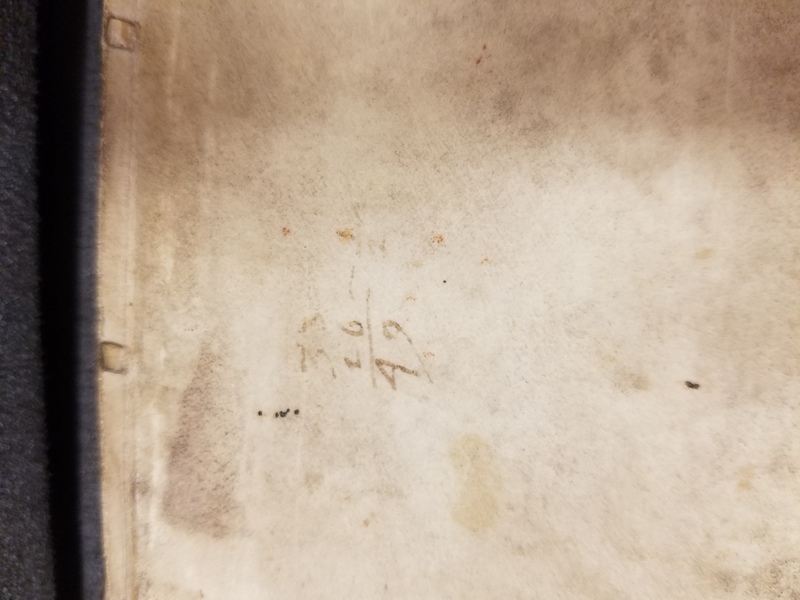
L’Estat et comportement des armes : livre autant util, que necessaire à tous Gentilshommes, Heraux, & Officiers d’Armes / par Jean Scohier (MSU library call number XX CR19 .S25 1629 or, roughly translated into English as “State and Arms Behavior: Book as Useful, as Necessary for All Gentlemen, Heroes, and Officers of Arms”) is a book on heraldry and the correct storage of arms, published in 1629 in Brussels, Spanish Netherlands. The author, Jean Scohier, was a genealogist in the Spanish Netherlands who wrote numerous books on heraldry and genealogy.

It was published during the reign of the “Most high, most powerful, most excellent King Philip IV, Catholic King of Spain” during the 80 Years’ War and the 30 Years’ War, although it was originally written in 1597 during the reign of King Philip II, meaning this is at least a second edition. A third edition was published in 1630. This book is still published and sold in modern versions. The book was published at the print shop of Jean Mommart, who died about a decade before this edition was published. Although it is written in French, the cultural context this book emerges from is from the Southern Spanish Netherlands (modern Belgium), the provinces that stayed loyal to the king of Spain during the Dutch Revolt. This page seems to be a statement of loyalty to the king of Spain.

L’estat appears to be in bound in vellum and it is written on paper as opposed to parchment. The quality is relatively poor. It consists of 187 pages and 15 unnumbered pages with illustrations and coats of arms as well as genealogies throughout the book. On a number of pages in the middle of the book the corners of the pages are torn. A large section of the book is about heraldy that tries to explain what different sections mean. There is an entire chapter dedicated exclusively to heraldry with different types of crosses.

A first bit of provenance can be seen on the front cover, where somebody appeared to do a math problem feintly on the binding. This could be an indication that the cover was reused from another publication, or it could mean somebody really needed to do a basic math problem (or write down numbers) and the cover of the book was the only thing they had available to them.

Next, there is an inscription on both the inside of the front cover and the first page. It is writting I am unable to reed, although on the first page the years 1691 and 1702 are written and, on the second page, following some writing, are the years 1666 and 1736. This was likely written by whoever came into possession of the book (for example, handed down from father to son or purchased somewhere). This also suggests that the contents of the book were not isolated to the year it was written or published. For some reason, the information contained in this book is still relevent more than a century later. There is no book plate, only these inscriptions that indicate it exchanged ownership at least four times before the writing stops.

This is the second inscription, with the years 1666 and 1736 clearly legible.

On page 155, a small bit of text is underlined. The underlined text reads “les 16. Ataves Paternelz, tant masles que femelles, derivent les 8. Abaves, & descendent desdictz Ataves” which in Google translate comes out as “the 16th Paternal Ages, both male and female, derive from the eight.” It is the only text in the entire book that is underlined, showing that this was somehow important to a past owner of the book. The ink is brown and it is in a different color than part of the instription on the first two pages. This means that it was likely underlined by one of the same individuals who wrote 1702 or 1736 on the first two pages.

On the back and front cover of the book, there are two holes that are perfectly alligned. These were linely used, since the cover is vellum, to tie the book down to prevent the pages from spacing out due to environmental conditions. These clasps or string are no longer attached to the book.

Unrelated to provenance, there are number of illustrations at the end of different chapters. The most detailed one is this one, which appears to be a demon.
This projects was done by Cameron Macko for Professor Liam Brockey’s History of the Book class.